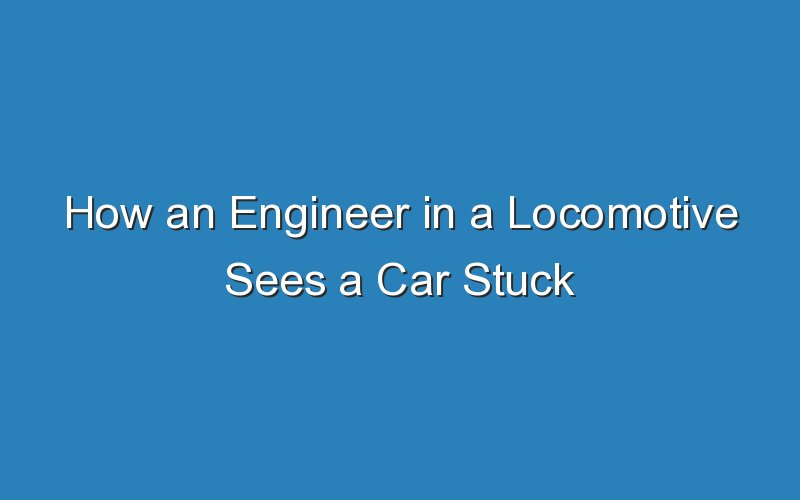Imagine an engineer in a locomotive seeing a car stuck in the track of a railroad crossing. The train is traveling at 10 m/s, and the engineer is 140 meters from the scene. The locomotive is traveling at a speed of 40 m/s. If the engine reacts in 0.26 seconds, the minimum deceleration for avoiding an accident is about 50 m/s.
The train is going at 26 m/s, and the engine must brake to a stop within 194 meters. The distance between the engineer and the car is 8.1 m. It’s a miracle the engineer was able to react in time to save the car. He was unable to see the car because the distance between him and the car was that long. Hence, he can’t be responsible for preventing the train from crashing into the car.
The train accelerates to 26 m/s and must stop within 194 meters. When the engineer arrives at the scene, he sees the car stuck in the track and stops the train to avoid it. The time it takes for the train to reach zero is also 8.1 meters. The distance between the engineer and the car is therefore not large. The driver of the vehicle who saw the car got off the train and ran as far as he could.
A car stuck on the railroad tracks: The train is traveling at 26 m/s and needs to slow down to zero within 194 metres. The train is moving at 15 m/s on level, frictionless track. The engine must reduce the speed of the train to stop in time to avoid colliding with the car. The truck driver is not seriously injured. The driver of the car was not hurt in the accident.
The train is 26 m/s and must stop within 194 metres. The train is also carrying a 3350 kg load. The driver of the train will try to prevent the crash by reducing the speed as much as possible. However, the driver must not let his eyes wander. If he is not able to stop the car, he may have to get the car off the tracks.
The driver of the Mazda RX7 jumped out of the car, but the engineer of the southbound Norfolk Southern train says the car was stuck in the tracks and he saw it before he locked the train. The engineer hit the car and forced it to stop, hitting the car in the process. The train rolled over the car, crushing the rear end of the vehicle. The woman was killed in the accident, and the train was not damaged.
The driver of the Mazda RX7 got out when the car became stuck in the tracks. The engineer in the southbound Norfolk Southern train saw the car while it was stationary. He immediately locked down the train and rammed the car, causing the car to end up on a parallel set of tracks. The woman’s rear ended was crushed, and she was seriously injured. Although the accident was tragic, the woman survived the crash.
The driver of the Mazda RX7 got out of her car when she realized that the train would crash into her car. The engineer of the southbound Norfolk Southern trains said he saw the car as it was stationary. He immediately locked the train and hit it, sending the car onto the parallel tracks. The rear end of the vehicle was crushed, and a woman was seriously injured. The cause of the collision is not yet known, but the incident is still tragic.
The engineer of the locomotive sees the car, and he is able to stop it without crashing. The train has the capacity to stop any car from crossing the tracks. This means that a train will have to slow down in order to avoid an accident. An engine in a locomotive also has the ability to stop a car when it is stuck in a railroad. This can be dangerous and can lead to death or serious injury.

